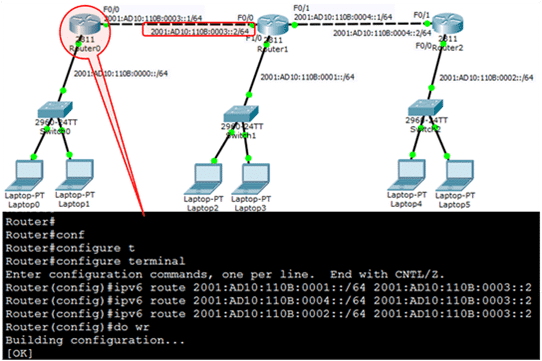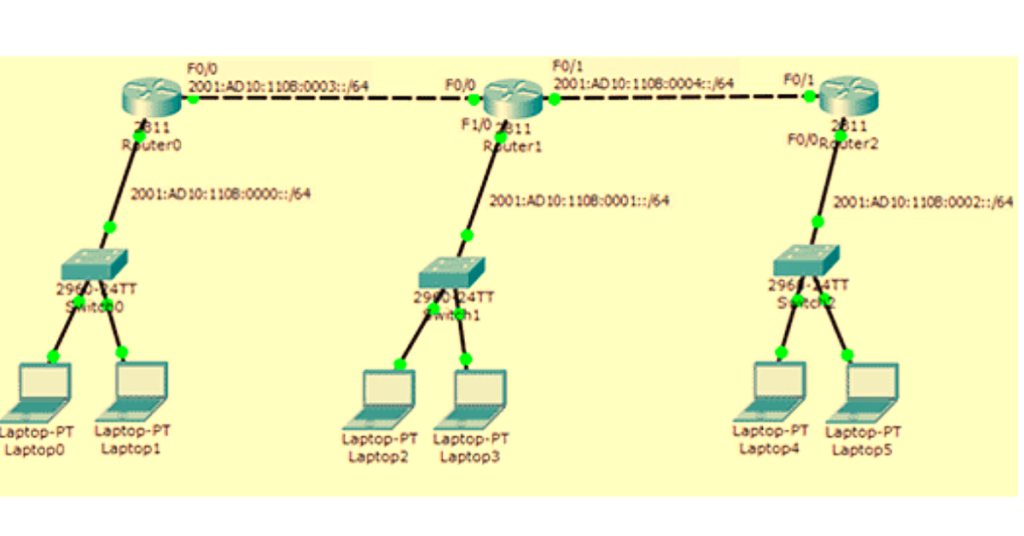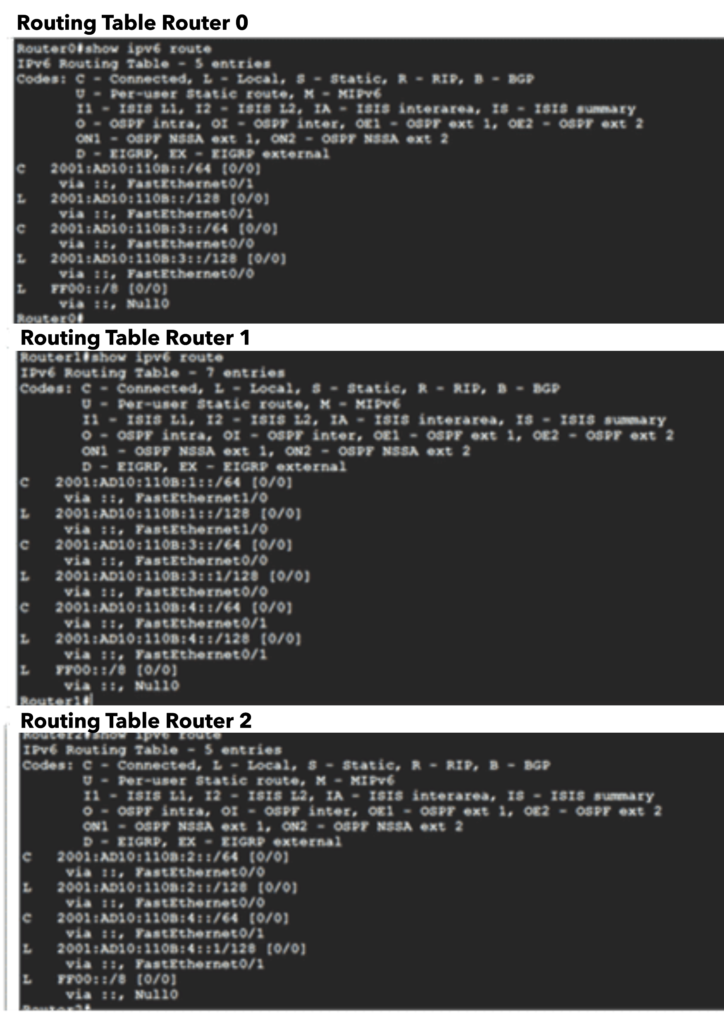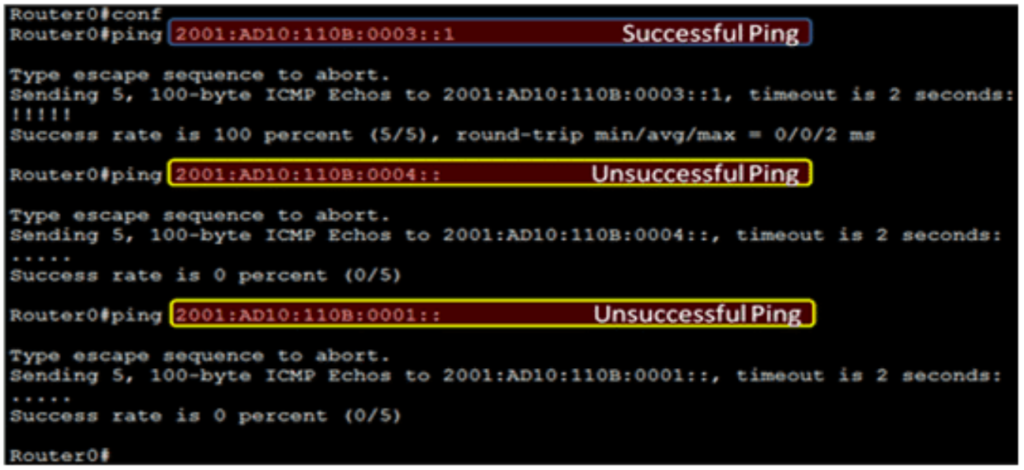What is IPv6 Route Next-Hop Option? – Explanation

As we already discussed, What is a Next-Hop in the Network? The article is a routing term for the next neighboring router a data packet can go through.
The IPv6 route next-hop is along with the series of routers connected simultaneously in a network and is the next possible destination for a data packet. Figure 1 displays the topology, and Figure 2 shows the routing tables of Router0, Router1, and Router2.
Each router maintains its routing table with an IPv6 route next-hop address, calculated based on the routing protocol and associated metric. The routers are the most critical network device among many devices.
To maintain information about other routers and networks in its routing table, the lowest metric in the routing table is known as the next-hop or the next optimal router.
When a packet passes a router, the hop count increases by one. For example, if a destination is 5 hops away from the source, the packet has to pass 5 different routers to reach it.
Also, for every router, the next router is connected to it with the best metric, such as the next hop in its routing table. Examine the following topology and then check the routing table of all routers in Figure 2.


You can check that each router has entries for its directly connected networks and their associated local addresses. Each router does not know about any network beyond its directly connected interfaces. For example, Router0 does not know networks:
- 2001:AD10:110B:0001::/64 – Local Subnetwork of Router1
- 2001:AD10:110B:0002::/64 – Local Subnetwork of Router2
- 2001:AD10:110B:0004::/64 – IPv6 subnetwork between Router1 and Router2
Figure 3 displays a ping result from Router0 to Router1 using IP addresses 2001:AD10:110B:0003::1, 2001:AD10:110B:0004:: , and 2001:AD10:110B:0001:: you can see that a ping to IP address 2001:AD10:110B:0003::1 is successful because network 2001:AD10:110B:0003::1/64 is available in the routing table as a directly connected router. The ping result from Router0 to IP addresses 2001:AD10:110B:0004::, and 2001:AD10:110B:0001:: are unsuccessful because the network is not available in the routing table of Router0. So, Router0 don’t know where to send the ping request, resulting in an unsuccessful ping result.
